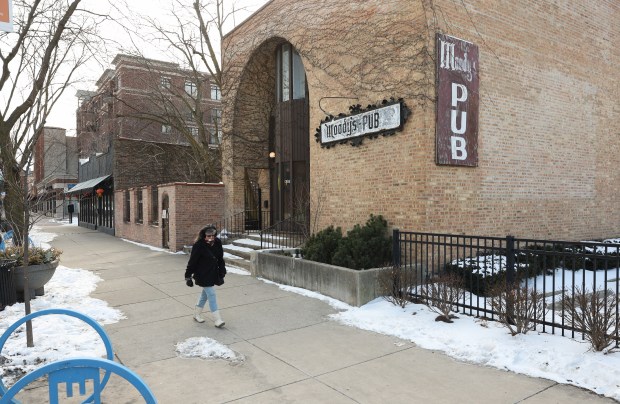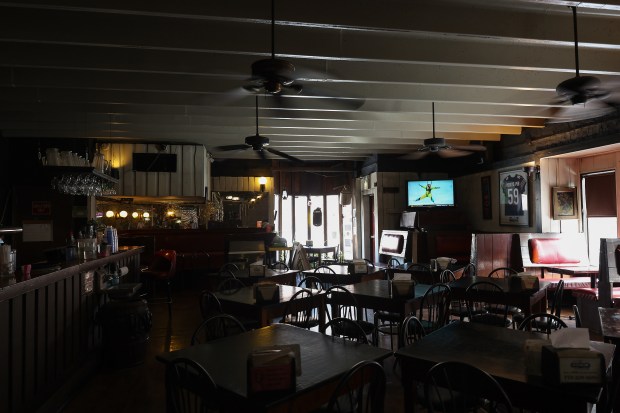The Chicago Plan Commission on Thursday approved a land use plan that could bring thousands of new housing units to a 20-block stretch of Broadway in Edgewater and Uptown.
City planners said the framework will cut red tape for developers and increase housing density, hopefully allowing more residents to move into the transit-rich corridor, where the CTA will soon complete its $2.1 billion Red-Purple Line modernization project.
Neighborhood residents were divided, with dozens speaking out during the contentious meeting. Many said Edgewater and Uptown were becoming too expensive for renters and new housing would loosen up the market, help address Chicago’s affordable housing crisis, and bring in thousands of new customers for local businesses.
“I love the corridor and I wish I could still live there, but unfortunately I was priced out,” said Kyle Lucas, a former Uptown resident.
But many longtime homeowners said the city and local aldermen are rushing the process. They strongly support the creation of more affordable housing, but the plan to increase density on such a long stretch needs more study, and lining Broadway with apartment towers could end up damaging the neighborhood’s historic character.
“We are not a NIMBY neighborhood, we are not anti-development,” said Jim Wyman. “But I think a little more deliberation is absolutely necessary.”
The new framework recommends changing the current zoning patchwork along Broadway, between Montrose Avenue and Devon avenues, now lined by many low-rise buildings with several housing units on the upper floors, into districts that allow the construction of mixed-use, mid-rise apartment towers, with the densest development near the seven CTA Red Line stations.
The proposal still needs City Council approval.
Katharyn Hurd, north region lead planner for the Chicago Department of Planning and Development, told commission members that the city wants to use CTA-owned parcels along the Red Line near Broadway as sites for affordable housing, possibly funded by low-cost loans through the city’s green housing initiative. And the CTA’s completed modernization will make the amenity-rich neighborhoods even more desirable to renters who want to move to Edgewater or Uptown.
“That’s becoming difficult to do, especially if you are not one of the most well-off who can compete for units,” she said.
She added that establishing a framework simply provides guidelines for developers and does not automatically change zoning along Broadway.
“Nothing will happen overnight,” she said.
Although the city held several open house meetings at a local restaurant late last year, attracting several hundred participants, neighborhood activists say planners did not spend enough time meeting with community members, explaining the proposal and digesting feedback.
“It’s only since the beginning of the year that people have started to wrap their arms around what’s happening,” said John Holden, president of the Edgewater Historical Society. “They talk about this as a framework, and what that means is kind of hard to figure out.”
Holden added that this stretch of Broadway contains dozens of historic buildings including 1105 W. Bryn Mawr Ave., a three-story Byzantine Gothic building, and longtime businesses such as Moody’s Pub at 5910 N. Broadway.
“We’re very concerned this could spell the end of the noteworthy historic buildings up there,” he said.

Former Chicago Department of Housing Commissioner and Edgewater resident Jack Markowski said city planners launched this planning effort last July, spending far less time than they did on the 2022 Western Avenue Corridor Study, an effort to transform a five-mile stretch from Addison Street north to Howard Street.
“They had a nearly two-year planning process and it was very inclusive,” he said.
Markowski agrees the area needs more affordable housing, but questions whether sweeping change to the neighborhood’s zoning is needed. He pointed out that Bickerdike Redevelopment Corp. won community approval last year for the construction of an 11-story, 90-unit building at 5853 N. Broadway in Edgewater one block south of the Thorndale stop on the CTA’s Red Line, formerly a facility for the Department of Streets and Sanitation. The developer plans to break ground on the all-affordable project later this year.
“That shows if you want to build here, the community will negotiate with you,” he said. “I totally support streamlining the approval process, but (the Broadway plan) is a brutal, broad brush approach to community development. We don’t want to create a process where the developer can run roughshod over the community.”
Daniel Cooper, director of research for the Metropolitan Planning Council and an Uptown resident, said he was sensitive to the concerns of some local residents, especially the single-family homeowners near the west side of Broadway, but changing zoning in response to individual development proposals was still too slow.
“I think doing this parcel by parcel slows things down, and turns off developers, who frequently go elsewhere and build where there are fewer barriers,” he said. “There are definitely real trade-offs, but these are trade-offs you have in every urban environment.”
The proposed zoning framework is supported by Aldermen Leni Manaa-Hoppenworth, 48th, Matt Martin, 47th, and Angela Clay, 46th, who represent Edgewater and Uptown.
Jesse Orr, director of infrastructure and development for the 46th Ward, said new development will take place over many years and residents will get many more opportunities to voice their concerns.
“We will not see any huge buildings go up without approvals,” she said.



